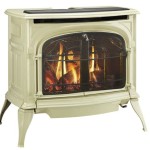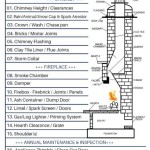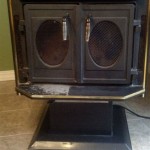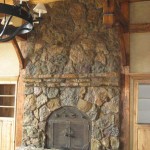Understanding Fireplace Blower Switches: A Comprehensive Guide
Fireplace blowers are supplemental heating devices designed to increase the efficiency of a fireplace by circulating warmed air into a room. The functionality of these blowers hinges on a reliable switch that controls its operation. This article delves into the various aspects of fireplace blower switches, including their types, functionalities, troubleshooting, and replacement procedures.
A fireplace blower switch is a critical component of the overall blower system. It serves as the primary interface for the user to turn the blower on and off, and in some cases, to adjust the speed of the blower. Understanding the different types of switches available and their specific applications is essential for proper operation and maintenance of a fireplace blower system.
The switch interacts with either the mains voltage (typically 120V AC in North America) to power the blower directly, or with a lower voltage control circuit, which in turn controls a relay or other electronic component responsible for providing power to the blower motor. The specific configuration depends on the design of the blower and its associated control system. The switch therefore needs to be rated appropriately for the voltage and current it is intended to handle.
Types of Fireplace Blower Switches
Fireplace blower switches come in several types, each with its own characteristics and applications. The most common types include: toggle switches, rocker switches, rotary switches, and thermostatic switches. Each type offers a different user experience and level of control over the blower's operation.
Toggle Switches: These are perhaps the simplest and most common type. A toggle switch uses a lever that is flipped up or down to turn the blower on or off. Some toggle switches may have multiple positions, allowing for different speed settings (e.g., low, medium, high). These switches are mechanically robust and relatively inexpensive.
Rocker Switches: Rocker switches are activated by pressing one side of a rectangular button. One side will typically have an "I" symbol for "on," and the other side an "O" symbol for "off." Similar to toggle switches, rocker switches can sometimes have multiple positions for speed control. Rocker switches offer a flush, modern appearance and are generally considered safer than toggle switches because there are no exposed contacts.
Rotary Switches: Rotary switches use a knob that is rotated to different positions to control the blower. These switches commonly have multiple positions for off, low, medium, and high speed settings. Rotary switches are often found in older fireplace blower systems, but some modern designs still utilize them for their intuitive control.
Thermostatic Switches: This type of switch is more sophisticated than the others. A thermostatic switch automatically turns the blower on and off based on the temperature of the fireplace. It uses a temperature sensor, typically mounted near the firebox, to detect when the fireplace has reached a certain temperature. Once the set temperature is reached, the switch activates the blower. When the fireplace cools down, the switch deactivates the blower. Thermostatic switches are energy-efficient and convenient, as they eliminate the need to manually turn the blower on and off.
Beyond these basic types, more sophisticated electronic switches and control systems can be found in high-end fireplace blower systems. These may incorporate digital displays, remote controls, and advanced temperature sensing capabilities. However, the fundamental purpose remains the same: to control the operation of the blower motor.
Understanding Switch Functionality and Wiring
The operational functionality of a fireplace blower switch is determined by its internal wiring and connections. The basic function is to complete or break an electrical circuit to power the blower motor. However, the specific wiring configuration depends on the type of switch and the design of the blower system.
A simple on/off switch has two terminals: one for the incoming power wire and one for the wire leading to the blower motor. When the switch is in the "on" position, it connects these two terminals, allowing electricity to flow and power the blower motor. When the switch is in the "off" position, it disconnects the terminals, interrupting the flow of electricity and stopping the blower.
Multi-speed switches have more complex wiring configurations. These switches use multiple sets of contacts and resistors to provide different voltage levels to the blower motor. Each position of the switch corresponds to a different speed setting. For example, the "low" position may use a resistor to reduce the voltage to the motor, resulting in a slower speed. The "high" position may bypass the resistor, allowing the full voltage to reach the motor, resulting in a faster speed. Understanding how these resistors are configured and how they affect the voltage to the motor is important for diagnosing and repairing multi-speed switches.
Thermostatic switches incorporate a temperature sensor and control circuitry to automatically turn the blower on and off. The temperature sensor provides feedback to the control circuitry, which then actuates a relay or other electronic component to control the power to the blower motor. The wiring of a thermostatic switch typically includes connections for the power supply, the temperature sensor, and the blower motor.
Correct wiring is crucial for the safe and proper operation of a fireplace blower system. Incorrect wiring can result in damage to the blower motor, the switch itself, or even create a fire hazard. It is essential to carefully follow the wiring diagram that comes with the blower or switch, and to consult with a qualified electrician if necessary.
Troubleshooting and Replacing Fireplace Blower Switches
Over time, fireplace blower switches can fail due to wear and tear, electrical surges, or other factors. Common symptoms of a failing switch include: the blower not turning on, the blower only working at certain speeds, intermittent operation, or the switch feeling loose or broken. Troubleshooting a faulty switch involves systematically checking its electrical continuity and mechanical operation.
Testing for Continuity: Before replacing a switch, it is important to test it for continuity using a multimeter. A multimeter is an electronic instrument that can measure voltage, current, and resistance. To test for continuity, set the multimeter to the continuity setting (usually indicated by a diode symbol or a beep sound) and touch the probes to the switch terminals. When the switch is in the "on" position, the multimeter should indicate continuity (a beep sound or a reading close to zero ohms). When the switch is in the "off" position, the multimeter should indicate no continuity (an open circuit). If the switch fails this test, it is likely faulty and needs to be replaced.
Visual Inspection: A visual inspection of the switch can also reveal problems. Look for signs of burning, melting, or corrosion on the terminals or the switch body. Check the switch mechanism for looseness or damage. If any of these signs are present, the switch should be replaced.
Replacement Procedure: Replacing a fireplace blower switch is a relatively straightforward process, but it is important to follow safety precautions. First, disconnect the power to the fireplace blower system by turning off the circuit breaker. Then, carefully remove the old switch, noting the wiring connections. Install the new switch, making sure to connect the wires in the same configuration as the old switch. Refer to the wiring diagram for guidance. Finally, turn on the circuit breaker and test the new switch to ensure it is functioning properly.
When replacing a switch, it is important to choose a replacement that is compatible with the existing blower system. The replacement switch should have the same voltage and current rating as the original switch. It should also have the same type of terminals and wiring configuration. Using an incompatible switch can damage the blower system or create a safety hazard.
For thermostatic switches, the replacement process may involve additional steps, such as calibrating the temperature sensor or adjusting the setpoint. Refer to the manufacturer's instructions for specific guidance.
If the troubleshooting process reveals more complex issues with the blower system, such as a faulty motor or control circuitry, it may be necessary to consult with a qualified technician. Attempting to repair these components without proper training and experience can be dangerous and may further damage the system.

Installing A Fireplace Blower Gfk4 Gfk4a In Heatilator Natural Gas

Fireplace Blower Fans What You Need For Heat Full Service Chimney

Fireplace Stove Blower Fan Rheostat Sd On Off Switch Control

Fireplace Stove Blower Fan Variable Rheostat Sd On Off Switch Contr Grillpartsreplacement Bbq Parts Retailer

Noisy Gas Fireplace Blower Here S How To Replace It Diy

Troubleshooting A Defective Blower Fan Kit

Fireplace Stove Blower Fan Variable Rheostat Sd On Off Switch Contr Grillpartsreplacement Bbq Parts Retailer

Fireplace Stove Blower Fan Variable Rheostat Sd On Off Switch Control Firepl

Remote Switch For Fireplace Blower

Fireplace Blowers Explained How Fans Work Regency








